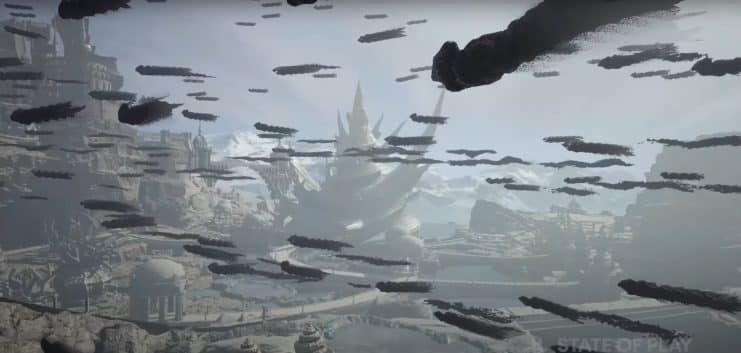

A look at how the remake and the rebirth of Final Fantasy VII explore psyche, memory and destiny through the symbolism of Jung and the Yogāra philosophy
Introduction
In Final Fantasy VII y Rebirth remakeThe concept of “fate” is reformulated as a mental and spiritual structure, more than a fixed time line. The echoes of Destiny, Aeris, Sephiroth and multiple omens that appear in this trilogy of Final Fantasy VII work as symbols of an internal and collective struggle: The dispute between the karmic repetition of unheated pain and the possibility of an authentic destination, not yet contaminated.
From this point of view, events should not be understood as traditional time travel, but as projections of the collective unconscious of the planet (Gaia), in which different levels of consciousness fight to impose themselves.
Inspired by Analytical psychology of Carl Jung and Buddhist philosophy YogācāraThis article interprets the events of Final Fantasy VII y Rebirth remake As symbolic representations of deep psychic processes: trauma, repetition, identification, karma, illusion and liberation.


Original echo: repetitive karma
Los Ecos (whispers) From Remake Final Fantasy VII It appears as entities that force events occur in a certain way. They do not protect life, nor are they looking for the common good: they protect the consolidated narrative. They are guardians of the repetitive model of collective trauma, which work as psychic defense mechanisms that prevent the soul (both individual and collective) from choosing another path.
In Jungiana:
They are autonomous complexes within the collective unconscious, which act alone, loaded with emotional energy. His goal is not healing, but the conservation of the structure, even if it is destructive.
In yogācāra:
They are mental waste (Vāsanās) that condition the perception of the world. As long as they exist, the flow of the mind will generate illusory worlds that will repeat the same pain, still and again.


The behaviors of the echoes of the Final Fantasy VII remake do not reflect justice, but automatism. They are the psychic equivalent of repeating past errors because the soul has not yet understood the lesson.
In the Jungian code: autonomous complexes that resist death
These echoes are contained in the collective unconscious that has acquired autonomy. They represent fragments of the planetary soul which, not being integrated, manifest themselves as external forces. In Jung’s terminology, they are unconscious complexes with an non -transformed emotional and symbolic load.




They don’t die with bodies, because they are not personal, but collective. They persist as long as there is an unresolved emotional energy that feeds them. Therefore, they still manifest themselves and again, interfering with the free will of the characters. They are not bad; They are symptoms.
White echoes: purified souls
Los White echoes They are a new demonstration that occasionally appears in the rebirth of Final Fantasy VII. They are thin, protectors and have a different nature from those observed in the remake.
What they represent:
Partially awake souls, who broke the repetition model.
They are signs that the collective soul of the planet is starting to remember its authentic nature.
In Jungiana:
They represent the integrated archetypal content, which indicates the identification: the process of becoming a complete self, not conditioned by the shade.
In yogācāra:
They are pure seeds, released by mental afflictions (Kleshas), which emerge as clarified visions, not contaminated by the ego.




The wall of fate as an illusory barrier
The wall of fate symbolizes a distortion of perception, a barrier that prevents you from seeing the true flow of life.
It is composed of the echoes of the remake of Final Fantasy VII, souls trapped in repetition patterns. It is an illusion projected by the will of Sephiroth, who wishes to model history with his comfort.
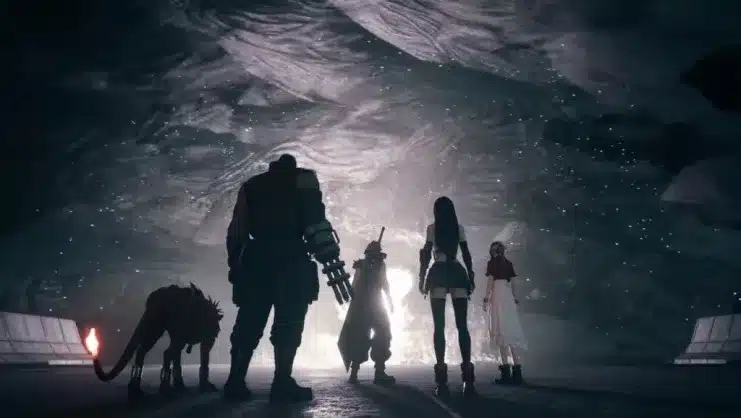

Aeris as a purification channel
Airfor its connection with the Cetra and the Vital currentIt has the ability to purify this wall. His presence not only challenges the narrative imposed, but also releases trapped souls, allowing the white echoes to manifest themselves.
This act of purification:
The illusion of fixed fate dissolves.
Restores the authentic connection with the vital current.
It generates new possibilities, not based on repetition but on free will.


Black Echoes: The Total Shadow
After the fight against the omen in the remake of Final Fantasy VII, Sephiroth absorbs the original echoes, bringing them to a deeper state of corruption: Black Echoes.
What they represent:
The souls are completely corrupted by Jenova and Sephiroth.
Fragments of consciousness have manipulated a total illusion.
They are projections of the will of Sephiroth, not of simple destination guardians.


In psychological terms:
They are destructive complexes that were born from unrecognized trauma.
In yogācāra, Klesha would be extreme, who generate illusory worlds without exit.
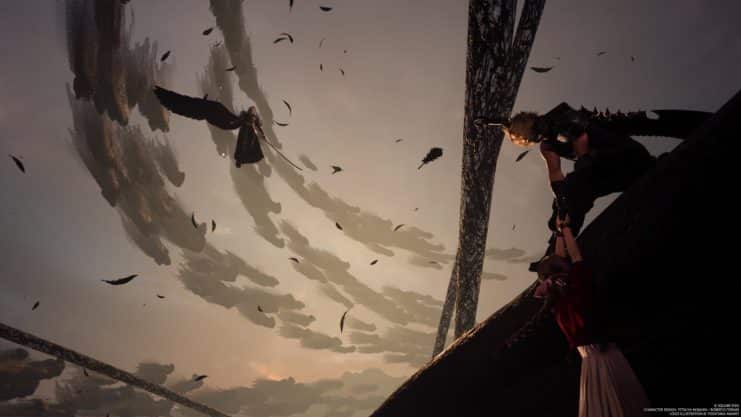

In Final Fantasy VII Rebirth We find moments that reveal more than you think:
When Aeris is besieged by black echoes, Cloud Remember how the first echoes have done the same in the past.
In the Forgotten capitalA new wall of fate is formed with black echoes, which recall the remake wall.
In the battle against the three omens Remake Final Fantasy VIIThese beings merge to form Eco Bahamut. In Rebirth, Sephirot does something similar and invokes the Echo of neo bahamut In the fight against the protagonists.
This suggests a progression: The black echoes are the final corrupt version of those of the remake of Final Fantasy VII, already completely subordinated to the will of Sephiroth.




The Battle of Souls: White Echoes vs Black
The clash between black and white echoes that we see in Final Fantasy VII’s Rebirth is not physical, but spiritual. It is the struggle between:
The manipulation of the future (Sephiroth, Jenova).
The authenticity of the planetary will (Aeris, Vital Current, the cetra).
In terms of yogācāra:
It is the battle between contaminated perceptions (āsrava) and pure perceptions (Nirvikalpa Vijñāna).
In Jungian terms:
It is the conflict between the tyrannical ego and the totality of being. The shadow (Sephiroth) has not been integrated: it has taken control and must be faced by full consciousness.




What Bugenhagen says about Fate in Final Fantasy VII Rebirth
When Bugenhagen says that fate is not real, only the decisions are, it exposes the central falsity of the eco speech:
There is no fixed destination.
The real path is a sum of conscious decisions.
The idea of a “correct destiny” is nothing more than an illusion built by trauma.
This is aligned with Yogācāra’s doctrine: reality is not objective, but built with internal mental seeds. Also with Jung: fate is what has not become aware.


What do the scenes in which Zack and Biggs mean are saved by the original echoes?
The answer to this question could be that Sephiroth would intend to keep some “emotional points” alive to build useful divergent worlds.
They represent unresolved desires and, when it preserves them, Sephiroth can support false realities that are used for their plans.
In the Jungian code: they are “autonomous complexes” that manifest themselves within the collective unconscious, resisting physical death because they still have an emotional or symbolic burden.
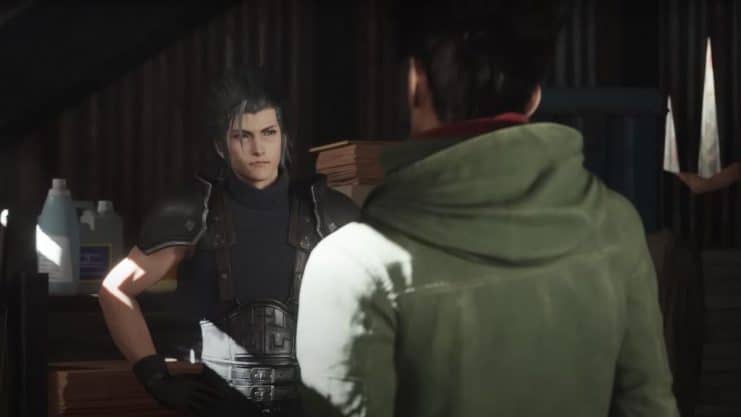

What do the three omens that represent at the end of the Final Fantasy VII remake represent?
These three omens appear in the final struggle of chapter 18, on the highway beyond the wall of fate. They are known as:
Cremisi omen
Fulminant omen
Nonetal vital
And they are strongly related in design with Kadaj, Loz and Yazoo, the remains of children of the Advent of Sephiroth.
These echoes would not be literally the remains, they would be rather corrupt souls modeled by powerful memories and emotions: in this case, the memories of a potential future (children of advent) who have been absorbed by Sephiroth.
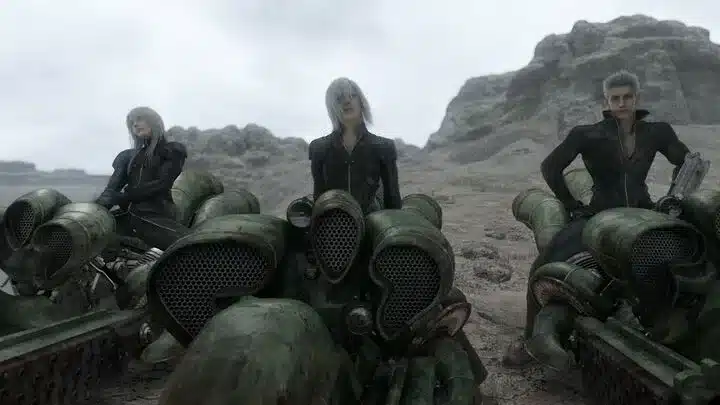

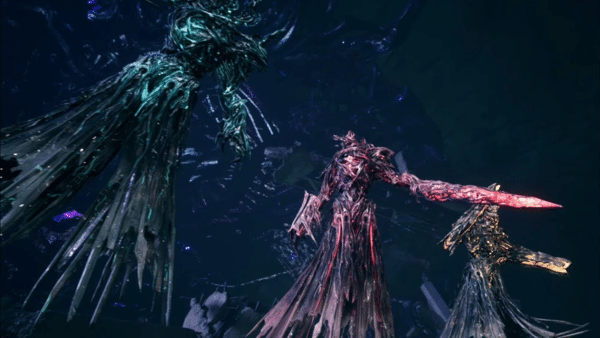

The fragments of Sephiroth’s will, modeled in shapes that reflect the multiple incarnations of their influence, personify the fragments. Sephiroth absorbed dreams, hopes and fears of different souls who have been fragmented and consolidated them in useful ways for him. These three echoes represent manifestations of these energies, created to demonstrate or face the group, forcing the fulfillment of the destination that Sephiroth needs.
Why can the cloud see the omens during your adventure?
Types of omens based on my point of view
Omens caused by the presence of echoes
Omens that occur without the presence of echoes
Both have different origins, although they manifest themselves similarly for the player: flashbacks, inexplicable emotions, images of the future, etc. The key is those who transmit information and how to reach the cloud.


Omens caused by the presence of echoes
The echoes have stolen clear memories and perceptions of Aeris. Therefore, Some echoes contain images of possible events of the future, stolen from the profound consciousness of Aeris (which is linked to its cetra clairvoyance).
When the cloud comes into physical or energetic contact with the echoes in the remake of Final Fantasy VII, those stolen memories partially filter their conscience.




Cloud, which has a weakened psychic connection but active with sephirot and vital current (for trauma, mako and jewelry cells), works as an antenna receiving of those stolen flashes.
Examples:
Chapter 3: seeing the pillar of sector 7, Cloud sees its future collapse. This occurs simultaneously with the appearance of the echoes → the vision derives from the memories stolen from Aeris by the echoes.
Chapter 18: During the fight against the omen, each member of the group sees visions of the future, in many cases relating to tragic events → these visions come from the stolen memories of Aeris, transmitted by the echoes.


Is presumed without echoing the intervention
These are more scarce, but much more intriguing. They are important because They show that Cloud also has a latent psychic sensitivity and that emotional connection can activate visions even without echoing interference.
Possible origin:
A. Deep connection with Aeris (the cetra)
Cloud establishes a spiritual bond with Aeris when he met her, especially when it is relaxed or emotionally open.
In the Church, when Cloud wakes up and sees him, he is in his most sacred space: his place of connection with the planet.
This place works as an “energy point” or a spiritual node of the planet and Aeris is vibrating with its purest essence.
The emotional and spiritual connection with Aeris in that state could generate an involuntary transmission of its clauds to the cloud, as a resonant echo.


This would explain why Cloud sees flashes of Aeris’ death even if there are no echoes present at that moment.
B. emotional resonance with fate
Deep emotions can act as “triggering factors” of latent consciousness.
In chapter 9, when the cloud sees Aeris and cries without knowing why, this is not a soup or a stolen image: It is an unconscious emotional resonance with a tragic fate, a very dimical spiritual perception that emerges from the inside.
This type of “feeling for no reason” is something that Jung and the yogi identified as non -conceptual intelligence: a direct intuition of the soul.


Induced visions → sephirot conscious desire
There are only two visions that clearly come from Sephirot, as expressions of their will:
The meeting in the north crater (when a clone transmits it on cloud).
The apocalyptic collapse of Gaia with meteorite (in the altered video of the Shinra building).
These visions do not come from the planet or from the chatter. They are artificially inserted by Sephirot as manifestations of their desire.
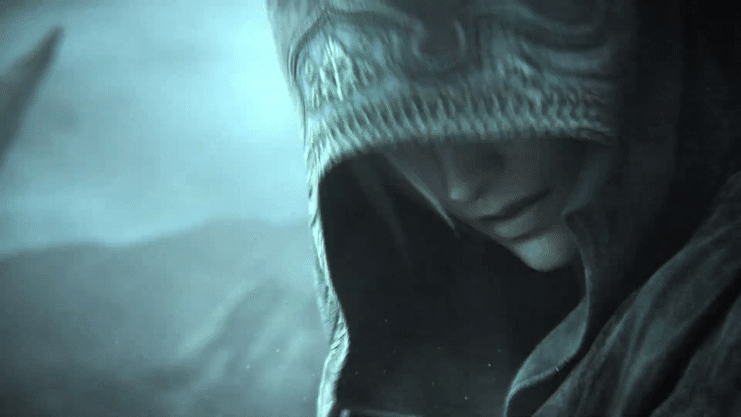

Who is the Sephiroth motorway in Final Fantasy VII remake?
That Sephiroth has an apparent physical presence, but could be partially formed by the echoes. Its appearance coincides with the collapse of the wall of fate, the echoes that surround it and its gesture of manipulating the portal towards singularity.
It would not be the Sephiroth of an alleged original temporal line, nor that in the northern crater, nor a simple manifestation of clones or Jenova. Rather it would be A highly concentrated spiritual residue, something like an autonomous form that has been invoked through vital current, with the help of the echoes.


This Sephiroth is the first step in the manifestation of a will arranged on many floors, a sort of negative self that began to prolong his consciousness beyond his physical body. It is like a spiritual fragment that crosses the vital current to the conscious plane.
Criticism of the theory according to which Gaia created the echoes to preserve the tax
Popular theory claims that after the defeat of Sephiroth in the original Final Fantasy VII, he returns to the past to rewrite his destiny and that the echoes were created by Gaia to ensure that the “right path” is fulfilled. But this presents serious problems:
A. Why should Gaia weaken Aeris?
If Aeris is the closest ally to the planet, why allow you to lose vital memories just when Sephiroth is active?
This makes no sense from a protective perspective. If the echoes were allies of Gaia, they would have authorized Aeris, they would not have blocked him.


B. Why preserve an imperfect fate?
The end of the original Final Fantasy VII is not a total victory. If Gaia wants to protect the planet, the opening to new possibilities would be more logical than repeating a known pain.
If the echoes want the best for the planet, should they not even prevent Cloud and Aeris from leaving Midgar so that the black material does not reach Sephiroth?


Conclusion: the symbolic war of the planetary soul
The original echoes are repetitive and unintegrated complex karma.
The white echoes wake up, emerging after purification.
The black echoes are the total shadow, consumed by the cosmic ego.
Sephiroth does not manipulate time: manipulates the collective soul.
And the greatest deception is that the original echoes believe they are neutral. When they face them in the remake of Final Fantasy VII, the protagonists break the cycle of trauma, but this does not destroy Sephiroth: it opens access to a deeper and dangerous consciousness … and more real.


In future articles we will deal more deeply the actions of the echoes in the key scenes of the Final Fantasy VII remake, exploring how they manifest themselves, which models follow and how they influence the decisions of the protagonists. We will also expand the analysis of the divergent worlds and their relevance in the general narration, leaving room to interpret its connection with the destination, the vital current and the will of the planet.
If you want to know more about the Final Fantasy VII remake trilogy, click on the following titles
Remake Final Fantasy VII against interpretative chaos: Royal Multiverse or Narrative Mirage?
Is the Final Fantasy VII remake trilogy a cyclical reinterpretation in Evangelion style? A critical analysis that questioned one of the most popular theories among fans
Beyond Destiny: the hidden role of the echoes in the remake of Final Fantasy VII

